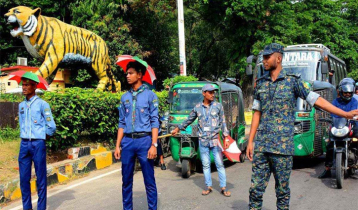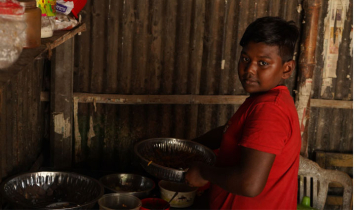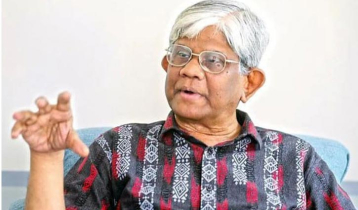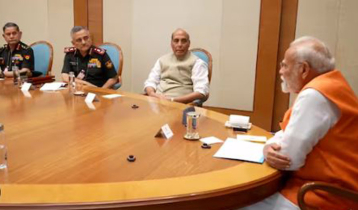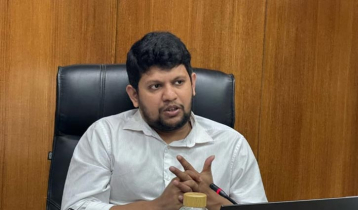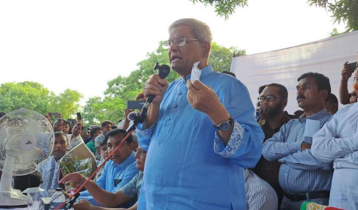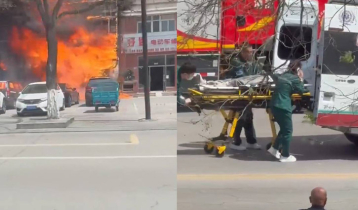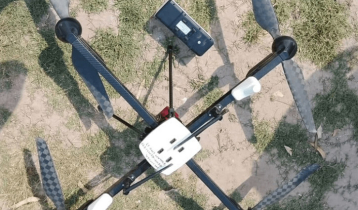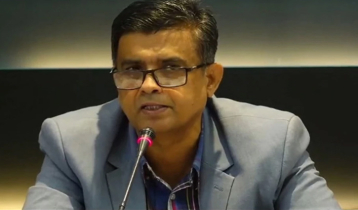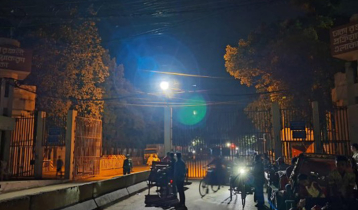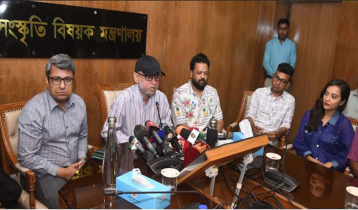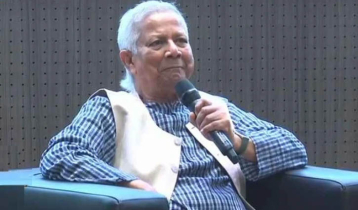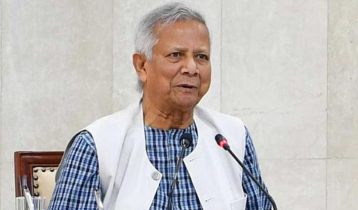We must get ready to face earthquake damages
Manzurul Alam Mukul || risingbd.com

The Big Himalayan Quake has been predicted for years. In the Himalayan belt, where an active Indian tectonic plate is said to be pushing up against the Tibetan tectonic plate at upwards of 4cm a year, considering a breakneck speed in geological terms.
On Saturday, the Indian and Eurasian tectonic plates crashed into each other -- also known as the Main Frontal Thrust (MFT) fault, rocking the four countries in the Indian sub continent.
Recent studies have shown that this fault has a rich history of evident and not-so-evident quakes, and is ripe for another major one. Several Indian experts who have been researching for years in the region, warned that a natural calamity is long overdue.
In an interview in May 2013, Vinod Kumar Gaur, seismologist with the Centre for Mathematical Modelling and Computer Simulation, said: “Calculations show that there is sufficient accumulated energy (in the MFT), now to produce an 8 magnitude earthquake. I cannot say when. It may not happen tomorrow, but it could possibly happen sometime this century, or wait longer to produce a much larger one.”
An expert says a strong earthquake may originate from Madhupur and Dawki faults. If an 8-9 magnitude of earthquake originates from Dawki fault, the capital Dhaka will face an ‘intensity of VII’ on the Richter scale that may destroy a huge number of buildings and leave nearly 1 lakh people dead.
The Dhaka city may also face a devastating earthquake anytime due to shifting of the present plate boundary to the Jamuna-Meghna river basin from east.
Although Dhaka is less vulnerable to tremor than Sylhet and Chittagong, it will experience massive damages due to soft formation of soil if one moderate quake hits the capital city.
However, the capital city is not remotely prepared to deal with them. If a severe earthquake hits the capital, most of the buildings won`t be able to withstand it, say experts. Many of the buildings in the congested neighborhoods of Old Dhaka are highly vulnerable, multistory brick buildings with irregular configurations.
According to Rajuk, there are over 10,000 vulnerable buildings in Dhaka city that were constructed with faulty design or violating the National Building Code. According to the seismic experts, a huge number of structures and buildings of Bangladesh, including Dhaka, Chittagong and Sylhet, will completely be destroyed if a moderate tremor hit the country.
According to a study of the Comprehensive Disaster Management Programme (CDMP) in 2010, some 78,323 buildings will be destroyed completely if a 6-magnitude earthquake shakes Dhaka.
In case of a 7.5-magnitude earthquake from Madhupur Fault, some 72,316 buildings will be damaged totally - while an estimated 53,166 will be partially destroyed. If an 8.5-magnitude tremor hits the region, some 238,164 buildings will be destroyed completely across the country.
A 7.5-magnitude earthquake from the Madhupur Fault will generate a total of 30 million tonnes of debris, killing some 131,029 people instantly and injuring 32,948 others, the study says.
There will be an economic loss of about US$ 1.1 billion resulting from only structural damage in case of a 7.5-magnitude earthquake from the Madhupur Fault. Economic loss due to damage of structures will be US$ 650 million and US$ 1.07 billion respectively in case of an 8-magnitude earthquake from the plate boundary-2 and in case of a 6-magnitude earthquake from under Dhaka city, according to the study.
Sources say buildings in Japan, which witnesses numerous quakes each year, are much more resilient.
Leader of earthquake expert team of Japan International Cooperation Agency (JICA) Fumio Kaneko, who recently visited Dhaka says, "Bangladesh should take a holistic approach including formulation of a master plan and form separate authority to enforce Bangladesh National Building Code (BNBC) properly in taking an effective earthquake preparedness".
He also says, "Bangladesh must start now. Japan had to spend 50 years to achieve the present expertise in facing earthquake".
Another Japanese disaster awareness expert Yuko Nakagawa, who visited Bangladesh for attending an earthquake related seminar, says mass awareness is a must in taking earthquake preparedness.
"In Japan, we all even the school children know what should be done during an earthquake. In Japan there is a community approach called Bokumi. The approach makes every member of a community sensitized towards earthquake preparedness," she says.
Like Japan, she says every house here should keep an emergency bag with essentials like, torch, matches, candle, medicine, fast aid item, water, dry food, radio, and some cash.
People should hang the bags beside outdoors of their houses so that they can take the bags easily during their evacuation, she says.
Mentioning the experiences of Rana Plaza building collapse and the launch Pink-6 capsize, an expert raises a question over Bangladesh`s preparedness to face any earthquake like that has happened in Nepal.
It is learnt that poor awareness among the Dhaka city dwellers has been seen after Nepal earthquake and frequent aftershocks jolted the country for two consecutive days. Panicked people in Dhaka city were seen to rush out from their residences desperately.
Basically, they do not know how to do, if major or strong earthquakes hit the country. If earthquake occurs, residents who live in top floors should not rush out from their houses as it may cause dangerous for them. Residents should stay under heavy furniture during earthquake and students should stay under tables or benches or move to open fields. Working people in different high rise offices or factories should follow same instruction in case of any earthquake. The people who stay in market and public places should not be panicked while exit, they should rush out slowly and take shelter in open places. It also advises city dwellers to switch off gas ovens as well as electric connections during the tremors. But it is unfortunate that those advices were not followed during tremors in the country.
In the circumstance, it can be said most people in Bangladesh lack adequate awareness to deal with earthquake. So, we need to launch awareness campaign aiming to educate them to face any major tremor. The country needs formulation of a disaster preparedness master plan to fix how Bangladesh will take a holistic approach towards tremor preparedness. The country also needs to set up a separate regulatory institute to enforce and to monitor the Bangladesh National Building Code (BNBC).
Side-by-side Bangladesh has to learn the experiences of Nepal earthquake to introspect what measures can be taken to minimize the losses of lives in case of such similar calamities.
risingbd/DHAKA/April 29, 2015/Mukul
risingbd.com

